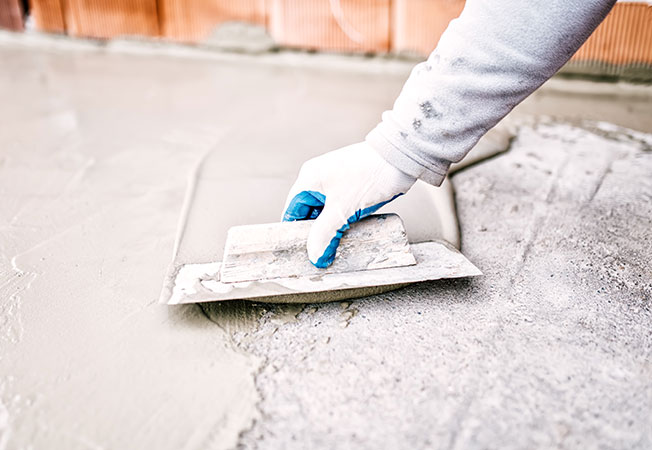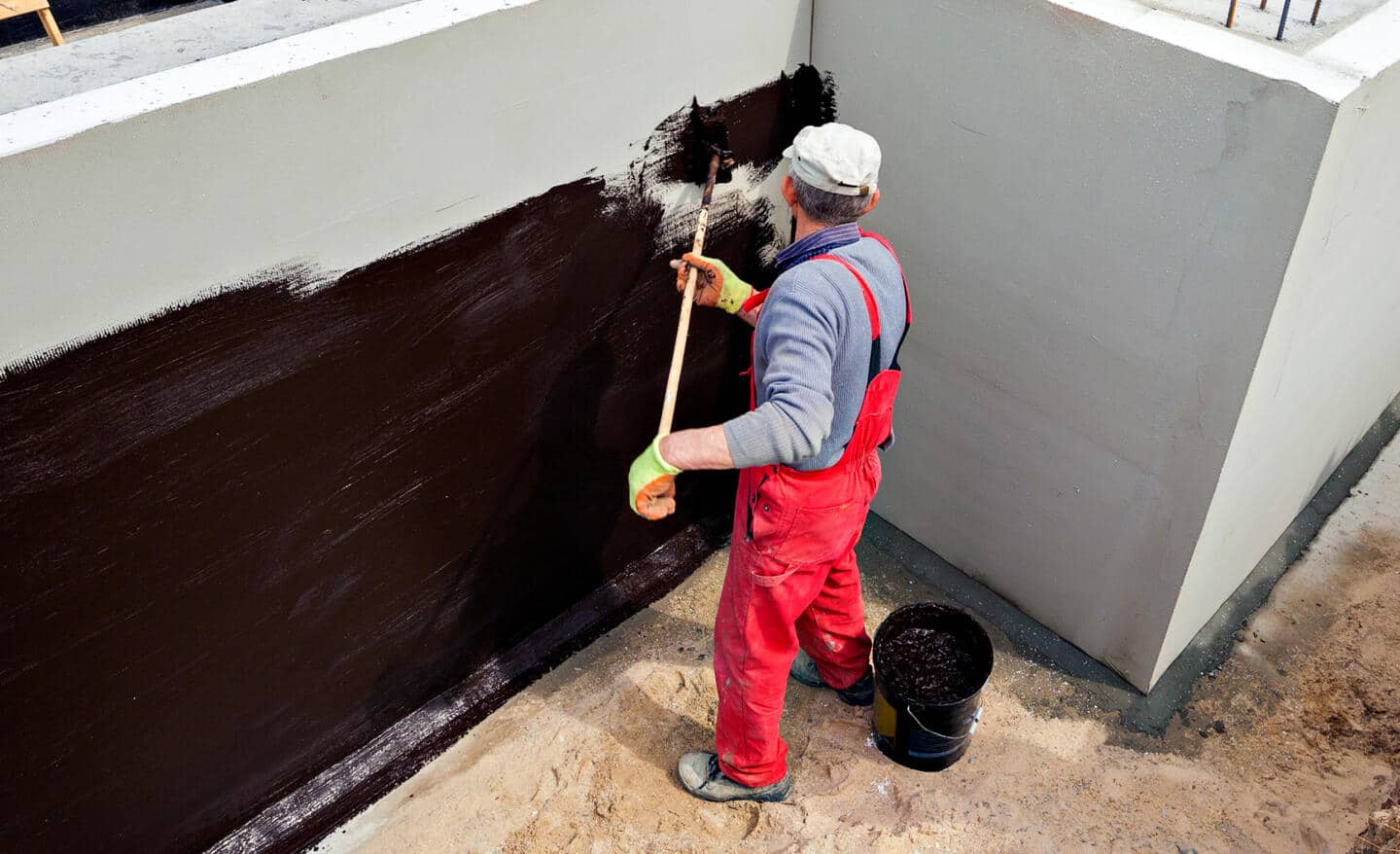How Yard drainage Omaha Boosts Property Value Instantly
Just How Waterproofing Works: A Thorough Take A Look At Techniques and Technologies
Waterproofing is vital for safeguarding structures from moisture-related damages. It includes numerous strategies and modern technologies that develop barriers versus water breach. Conventional techniques, such as compacted clay, coexist with contemporary developments like liquid-applied membranes. Comprehending the subtleties of these techniques is essential for effective application. Nevertheless, the efficiency of any kind of waterproofing solution pivots not only on the strategies utilized however additionally on continuous maintenance and assessment. What are the essential factors that affect long-term efficiency?
Understanding the Basics of Waterproofing
Waterproofing is a crucial procedure that shields frameworks from water intrusion, which can bring about considerable damage in time. This approach involves the application of various materials and strategies designed to produce an obstacle versus wetness. The key objective is to avoid water from penetrating surface areas, which can create wear and tear, mold development, and architectural instability.Various elements influence the choice of waterproofing method, consisting of the kind of structure, its place, and ecological problems. Understanding the physics of water movement and the properties of various products is essential in selecting an efficient waterproofing solution.Effective waterproofing not just safeguards structures yet also boosts their longevity and integrity. Commonly, it is incorporated right into the design stage of building to assure thorough defense. As awareness of water-related problems expands, the value of comprehending waterproofing basics ends up being significantly clear to architects, building contractors, and homeowner alike.
Traditional Waterproofing Approaches
Standard waterproofing methods have been made use of for centuries, relying upon reliable strategies and materials to protect structures from water damages. Among the earliest approaches includes making use of clay, which, when compacted, creates a natural barrier against moisture. In addition, asphalt, a sticky, black material stemmed from petroleum, has actually been used for its waterproof homes, frequently related to roof coverings and foundations.Another strategy includes the application of lime-based plasters, which provide a breathable layer that enables dampness to run away while preventing water ingress. Thatch roof covering, a standard method still seen in some societies, offers exceptional waterproofing due to its securely packed straw layers.Moreover, making use of stone and brick has projected, as these materials are naturally immune to water when appropriately mounted. Overall, standard waterproofing methods highlight the significance of picking ideal materials and building techniques to improve toughness against water breach.
Modern Waterproofing Technologies
Advancements in modern waterproofing innovations have reinvented the means structures are protected from water damages. Innovative techniques such as liquid-applied membranes and innovative sealants have actually boosted the efficiency and adaptability of waterproofing services. These modern technologies enable smooth application, decreasing the risk of leaks and making certain detailed insurance coverage over complex surfaces.Moreover, the assimilation of smart technologies, such as wetness sensors and automated surveillance systems, allows real-time analysis of waterproofing efficiency. This aggressive approach promotes timely maintenance and lowers long-lasting repair work costs.Additionally, advancements in spray-applied layers provide quick application and excellent bond, adjusting to different substratums while providing durable defense. Techniques like polymer-modified systems better boost versatility and sturdiness, making them appropriate for diverse settings. Generally, modern-day waterproofing modern technologies not just minimize water breach yet additionally add to the longevity and sustainability of frameworks, marking a substantial change in the market.
Products Made Use Of in Waterproofing
The performance of waterproofing remedies greatly counts on the materials utilized in their application. Different materials are utilized to develop obstacles versus water ingress, each with unique residential properties matched for various atmospheres. Frequently utilized products consist of membrane layers, finishes, and sealants.Liquid-applied membrane layers, commonly made from polyurethane or acrylic, form a smooth obstacle that adjusts to complex surface areas. Sheet membrane layers, commonly created from rubber or thermoplastic, deal longevity and are optimal for larger locations. Additionally, cementitious waterproofing materials, made up of cementitious compounds, offer outstanding adhesion and flexibility.Sealants made from silicone or polyurethane are vital for joints and joints, making certain comprehensive protection. Additionally, innovative products, such as geo-composite membranes, incorporate multiple features, improving efficiency. Overall, the selection of waterproofing materials is vital in attaining durable and effective water resistance, customized to details task needs and ecological problems.
Common Applications of Waterproofing
Waterproofing plays a vital function in various sectors, ensuring the long life and honesty of frameworks. Typical applications include household remedies that shield homes, commercial infrastructure that safeguards companies, and commercial setups that need robust protection versus wetness. Understanding these applications highlights the relevance of waterproofing in keeping both safety and security and performance throughout different environments.
Residential Waterproofing Solutions
Several house owners face obstacles with wetness intrusion, making efficient domestic waterproofing remedies vital. Numerous techniques waterproof roof coating exist to resolve this issue, consisting of interior and exterior waterproofing systems. Inside services frequently entail the application of sealants and finishes to cellar walls, which aid avoid water infiltration. Exterior techniques commonly include the setup of drainage systems and water resistant membrane layers that divert water away from the foundation.Additionally, home owners might consider sump pumps to remove water buildup and dehumidifiers to control humidity levels. Correct grading and making use of rain gutters also play a crucial duty in handling water flow around the home. By executing these methods, homeowners can considerably reduce the threat of water damage and mold and mildew development, making certain a dry and risk-free living environment.

Business Infrastructure Security
Reliable waterproofing services play a crucial function in the defense of industrial framework. Water Solutions. These methods are essential for securing structures, parking structures, and bridges from water damage, which can jeopardize structural stability and lead to costly repair work. Typical applications consist of the setup of membrane layers, coatings, and sealants that create barriers versus dampness seepage. Locations such as basements, roofs, and outside wall surfaces are often prioritized to ensure longevity and longevity. In addition, waterproofing systems can boost power performance by preventing water-related issues that might bring about mold and mildew development and degeneration. By carrying out durable waterproofing steps, residential or commercial property owners can safeguard their investments and maintain functional effectiveness, eventually adding to the total sustainability of industrial browse around this web-site facilities
Industrial Applications Overview
While numerous markets encounter distinct difficulties, the demand for trustworthy waterproofing solutions stays a constant in commercial applications. Industries such as production, construction, and energy commonly encounter environments where moisture direct exposure can jeopardize structural stability and operational effectiveness. In making centers, waterproofing is important for protecting machinery and materials from water damage. In building, it safeguards foundations and basements versus groundwater seepage. The energy market counts on waterproofing for the security of devices in hydroelectric plants and offshore structures. Additionally, food processing industries utilize waterproofing to assure health and compliance with security requirements. On the whole, reliable waterproofing remedies are essential for enhancing resilience, security, and efficiency across numerous commercial setups.
Maintenance and Long Life of Waterproofing Solutions
Although waterproofing solutions are designed to offer lasting defense against moisture intrusion, regular upkeep is vital to assure their performance and durability - Basement waterproofing Omaha. Regular examinations play a substantial function in recognizing prospective problems such as fractures, peeling off, or signs of water damages. Dealing with these issues quickly can prevent further degeneration and expensive repairs.Additionally, cleansing the surface of waterproof areas aids eliminate dirt and particles that could jeopardize the stability of the waterproofing obstacle. It's likewise advisable to reapply safety coatings or sealants as recommended by suppliers to preserve excellent performance. Ecological aspects, such as UV exposure and severe weather, can affect the lifespan of waterproofing materials, making regular assessment vital
Frequently Asked Concerns
Can Waterproofing Be Applied in Cold Weather?
The inquiry of using waterproofing in cold weather increases worries concerning adhesion and curing. Several products may not execute at their best in reduced temperatures, demanding mindful choice and consideration of specific standards for effective application.
How Much Time Does Waterproofing Commonly Last?
The duration of waterproofing effectiveness varies based on products and ecological factors. Generally, it can last from 5 to 10 years, yet routine upkeep and examinations are necessary to guarantee peak efficiency and long life.
Is DIY Waterproofing Effective and Safe?
The effectiveness and safety and security of DIY waterproofing depend on different aspects, consisting of material high quality and application technique. While some people accomplish satisfying results, others might run into issues that compromise long-term security and architectural integrity.
What Are the Indicators of Failing Waterproofing?
Indicators of stopping working waterproofing include visible water spots, peeling off paint, mold and mildew development, musty smells, and wetness in wall surfaces or ceilings - Basement waterproofing Omaha. These signs helpful site recommend compromised obstacles, demanding punctual evaluation and possible removal to avoid additional damages
Exactly how Do I Choose the Right Waterproofing Specialist?
